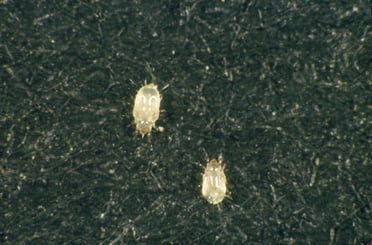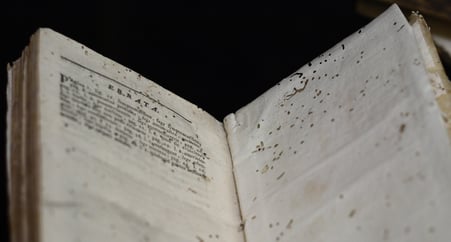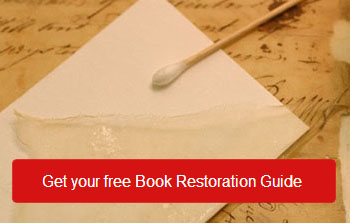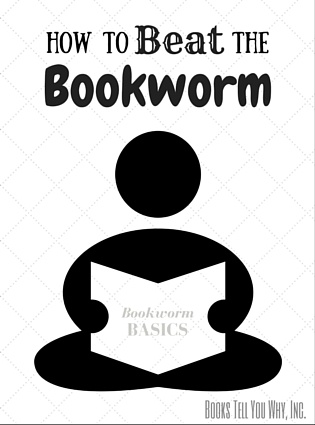What is a bookworm, anyway? Is it the baby of a beetle? A living creature that loves books? A larvae placed there by a moth? Why do we care, again?
If you're interested in learning more about how to identify and beat the bookworm in order to keep your books and collection safe, you're in the right place. Read on for our best bookworm-busting strategies.
The truth is there is no one species that can be taxed with being the mother of the bookworm. A bookworm is any small worm, in the larvae stage, who likes to live in, and eat, books. These creatures can be anything from beetles (Family Anobiidae and Family Dermestidae) to booklice (Yes, that’s a thing), and moths (Family Lepidoptera). We can also name termites, silverfish, and firebrats in this category.
 |
|
|
Bookworms love books, and so do we, just in different ways. The glue and the pages and the warm places to burrow: these bookworm babies can’t get enough, and their parents know it. Like all good moms, they leave their children alone with a good book and trust they will be okay. Our job is to stave off the mother, and kill her darlings when the time comes.
The good news? If you love your books more than the worm mothers do, you’re going to be fine. Keep it dry, keep it clean, and keep it coming off the shelf now and then to disturb the dust and avoid the opportunity of nesting by insect mothers.
However, if you see “frass” you know you’re in trouble. Frass is another word for insect poop, and it’s a sure sign that a mother was looking for a place to lay her babies. You’ll see a little sandy pile, and if you look at your book, little pinholes will make themselves apparent and you’ll know it’s time to defend your tomes.
One of the things that mother and child are adverse to is the cold. The warmth of the book—the security—is what draws them in, and the harsh temperatures of a freezer will be their undoing. If you work in an academic library, chances are you have an industrial freezer for bug killing. If you do not, however, you can still use your freezer at home. The bugs can potentially survive if not frozen fast enough, but repeated freezing will kill them eventually.
 |
| A book showing damage from insect infestation ("bookworms"), on display at the Yale Medical School library** |
You also need to remember not to throw the baby out with the bathwater. Or perhaps the mother/child metaphor is getting a little confused. What we mean is, keep the books safe first and foremost. For instance, leather bound books may not be the books to freeze. This could cause the material to “bloom” meaning that the surface of the leather rises due to the fat in the leather. Not good. Also, canvas paintings, wood panels, ivory, ceramics, and joined wooden panels should not be frozen, no matter how much frass we’re dealing with.
When you do freeze, do it right. Use a plastic bag with a zipper, and squeeze out the air. If not, you could incur some water vapor, which will turn into water damage and stains, so avoid that. If you’re freezing lots of books, stack them no more than four inches thick. Also, make sure to use a “frost free” freezer. You want one with no ice crystals, but not one that has been recently defrosted, as this will not reach the temperature (-4 degrees) you need. Freeze for 72 hours minimum, but it’s recommended to go the full three weeks to make really sure they’re all dead. Thaw…but not too fast. Putting books in the fridge to slow the process is ideal. Yes, your dinner guests will wonder why your fridge is full of books. Probably best not to mention the frass.
At this point you’re probably wondering why we don’t just use old fashioned insecticide. We put it on the plants in our garden, on the food that we eat, and on our lawns; why are we sparing our books this treatment and allowing mother and child to consume and destroy our books?
Unfortunately, the chemicals used could easily permanently damage the pages. Also, though we do use it on the food we eat, it’s in a controlled and special method that keeps us from getting poisoned. Any chemical directly placed on the pages of a book could then be breathed in, absorbed into the skin, or simply gotten on the hands and later into the mouths and eyes of the readers of the books. The terrible irony? The insecticide may not even kill the eggs. It’s just not a productive or safe idea...stick to the freezer.
Although you can use light pesticide to kill the mothers of the babies, it’s best to use this sparingly, and as part of a larger preventative program. Part of this prevention includes traps. Not only will the traps literally trap potential mothers and recently hatched offspring, it will allow you to count, identify, and monitor the bookworm activity in your home or academic library. You’ll want to place these in corners, dark areas, and near sources of water for best impact.
So, that’s it! Keep your books circulating, in good use, place some traps, monitor the activity, watch out for frass, and keep your freezer ready to kill. In the end, respect the bookworm. He only wants what you do: to be close to the warm, safe, environment provided by a good story, held together with glue and fantasy, and to stay there as long as it doesn’t get too cold.

Baughman, M. (2012, April 13). Approaches to Insect Problems in Paper and Books. Retrieved December 29, 2015, here.









